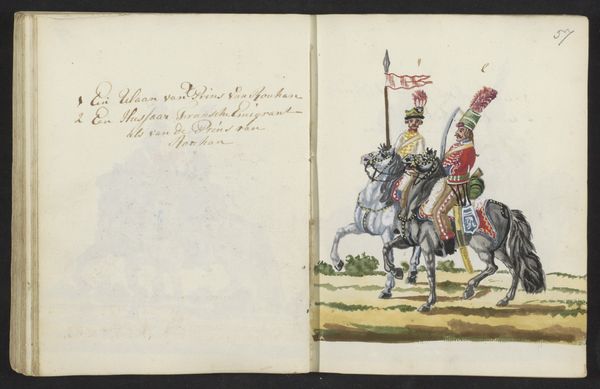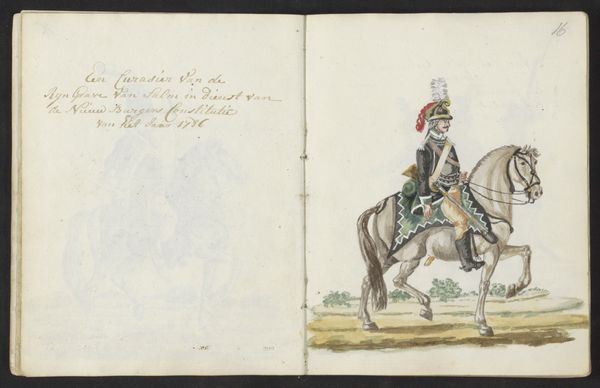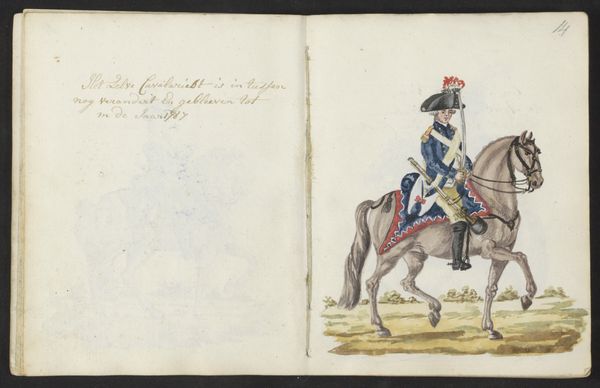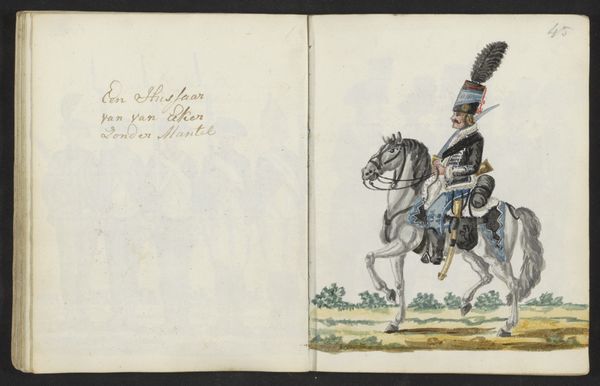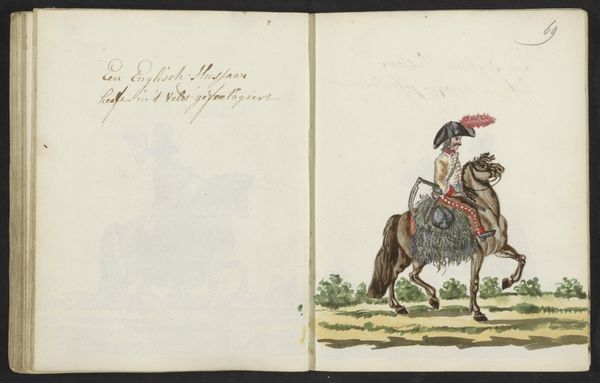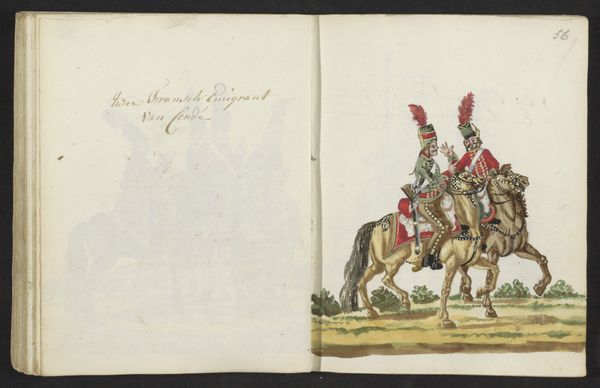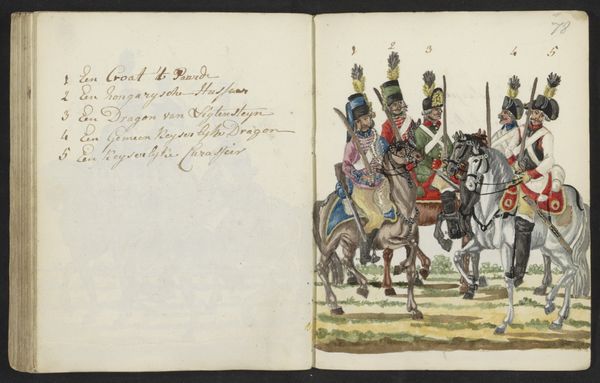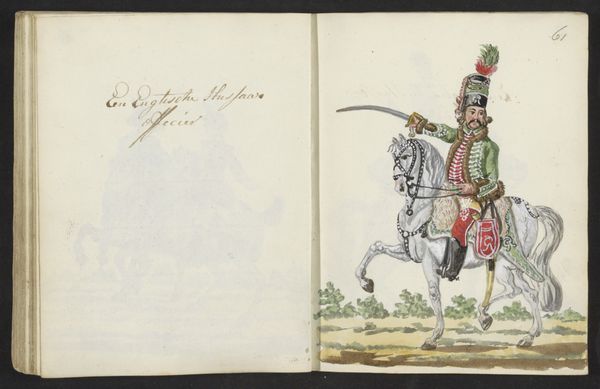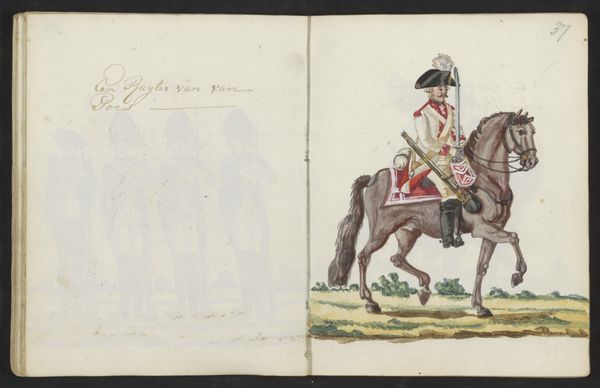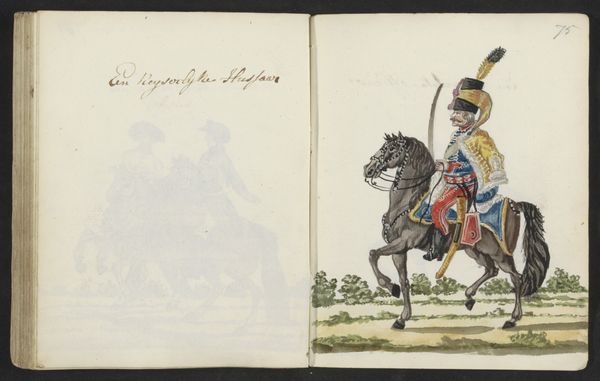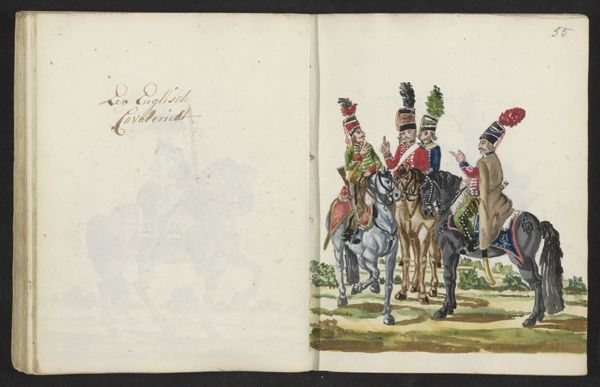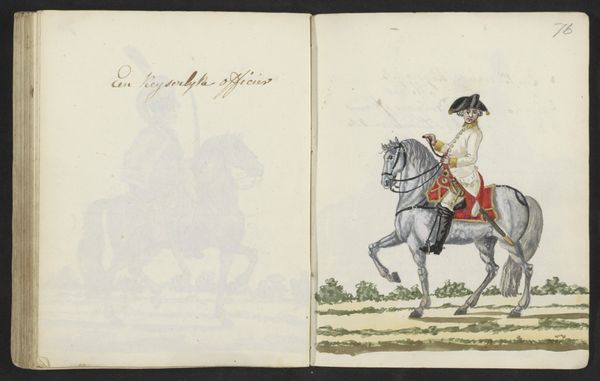
drawing, coloured-pencil, paper, ink
#
portrait
#
drawing
#
coloured-pencil
#
pen sketch
#
paper
#
ink
#
coloured pencil
#
romanticism
#
genre-painting
Dimensions: height 197 mm, width 310 mm
Copyright: Rijks Museum: Open Domain
Curator: This is a page from a sketchbook depicting an English Hussar uniform, rendered in ink and coloured pencil, sometime around 1795. It’s attributed to S.G. Casten. Editor: It's striking how vividly the red of the uniform pops. There's a real sense of flamboyance and confidence. The slightly cartoonish style of the drawing contrasts strangely with the very serious implications of the subject matter, doesn’t it? Curator: It does. These genre paintings, even in sketchbook form, often served as both documentation and, more importantly, as subtle forms of political messaging. Depictions of military prowess contributed to the broader nationalist fervor that was sweeping Europe at the time. Think about the way uniforms become visual shorthand for power. Editor: Exactly. And how the details signify status. This isn't just a generic soldier. Consider the time in which this image was created. Who was it intended for, and what sort of politics does the artwork convey? Was this a display of national pride or perhaps a statement related to the social position of the military in that time? Curator: Well, the meticulous detail suggests an intended audience familiar with military uniforms and their associated symbolism, likely within court or military circles. Given the historical context, the uniform may also represent shifting power dynamics, colonial aspirations, and gender expectations. Think about what "masculinity" looked like on the world stage in the late 1790s! Editor: The almost obsessive level of detail does indicate something beyond simple observation. I wonder how such images impacted contemporary perceptions of military authority. Did the romance of such paintings conceal the often brutal realities of war? Curator: No doubt it's about power, yes. But also pageantry. And these were potent tools. The colours, the posture…the whole ensemble is designed to project authority. Think of it as an early form of state propaganda, carefully managed visual rhetoric influencing public opinion through controlled narratives. Editor: Indeed. A visual spectacle meant to inspire awe and loyalty. Seeing it now, separated from its immediate historical purpose, it's interesting how readily that visual language of authority remains legible. Curator: It reminds us of how carefully constructed such images were—and are—in shaping our understanding of conflict, heroism, and even what it means to belong to a nation. Editor: Yes, it serves as a poignant reminder that visual culture is inherently intertwined with social and political power structures. The sketchbook context provides intimate insights.
Comments
No comments
Be the first to comment and join the conversation on the ultimate creative platform.
